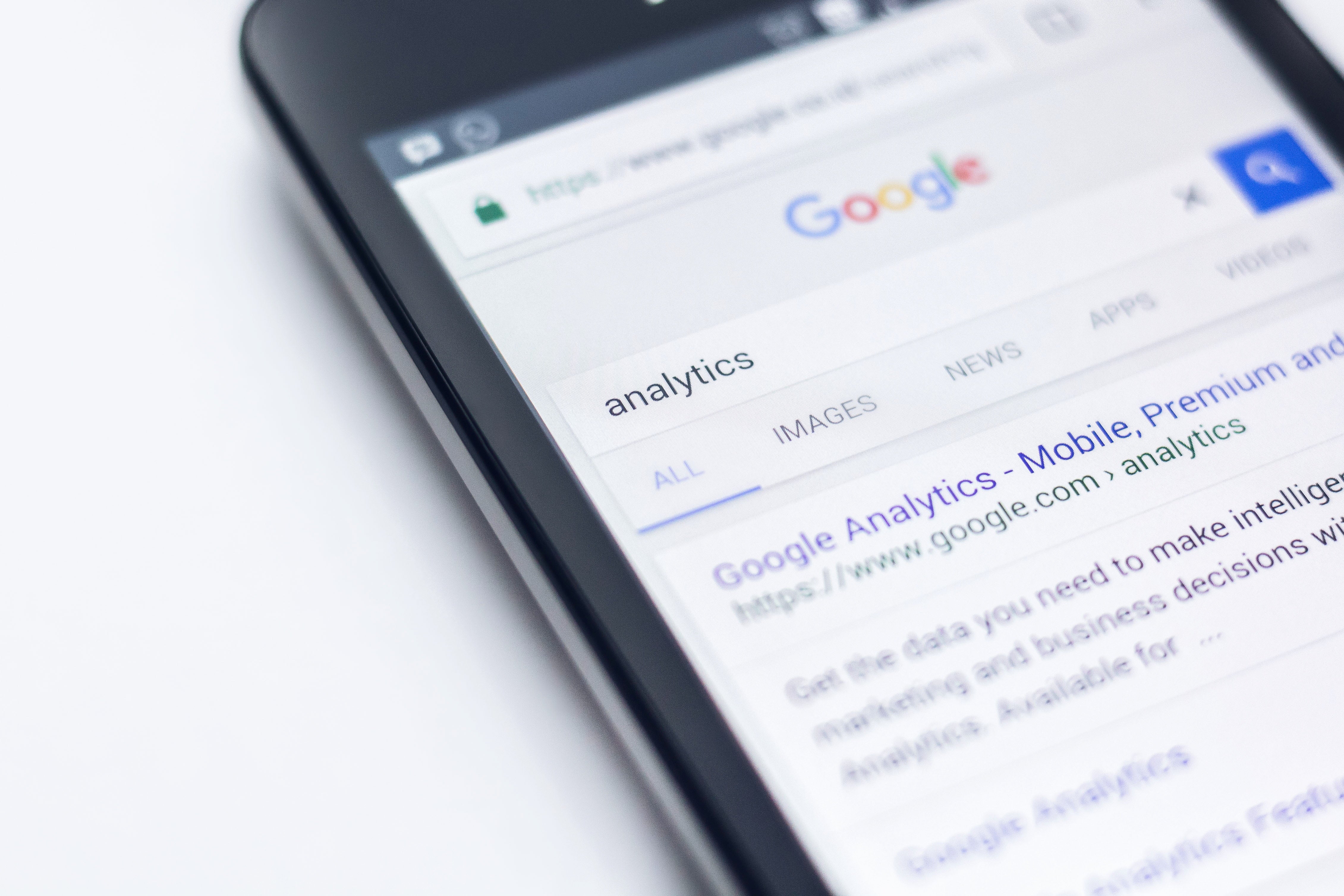Jun 08,2023 Juno Ecommerce Marketing
Navigating the transition to Google Analytics 4 (GA4)

As we continue navigating the evolving digital landscape, it is crucial to stay informed about pivotal changes. One such transformation that businesses need to pay close attention to, is the transition from Universal Analytics (UA) to Google Analytics 4 (GA4).
In an attempt to better cater to the needs of marketers, Google has introduced GA4, a powerful analytics tool set to redefine how we collect, interpret, and act upon our data. This transition is more than a simple update; it signifies a paradigm shift in the world of data analytics.
Google Analytics 4 (GA4) has been around for quite some time. However, in the past year, Google has declared a definitive end date for Universal Analytics (July 1, 2023). You’ll still be able to access historical data from UA, but it will not collect any new data. Consequently, businesses seeking to continue using Google Analytics, will be required to transition to the upgraded GA4 platform.
What is the rationale behind this switch? The answer is straightforward. GA4 is a more future-focused solution. It comes equipped with an array of robust features designed to help users effectively navigate the complexities of privacy regulations and cookieless tracking, among other aspects. Essentially, with GA4, Google is assuring users that it's prepared for the challenges of the future.
The deadline for this transition is fast approaching. Once it passes, Universal Analytics will become a thing of the past. Businesses that fail to transition in time will risk being left behind in this dynamic digital marketing landscape.
Therefore, it is paramount that businesses prepare for this change. Although the transition to GA4 might seem challenging initially, it promises to be an investment worth making for the future.
Understanding GA4
Google Analytics 4 represents a new generation of data analytics. While Universal Analytics has served us well, GA4 brings about a multitude of advancements, designed to meet the demands of today's increasingly complex digital ecosystem. Let's dive deeper into understanding GA4 and how it fundamentally differs from its predecessor.
At its core, GA4 is an event-based, user-centric model, unlike UA, which is primarily session-based. What this means is that GA4 focuses more on the user's actions or 'events', providing a more nuanced understanding of user behaviour. This shift helps marketers to understand the complete life cycle of customer interactions, thereby enabling them to craft more personalised and effective marketing strategies.
In terms of features, GA4 offers a few key enhancements over UA.
- The Advanced Analysis tool offers comprehensive insights and flexibility to dive deeper into your data.
- GA4's predictive capabilities, powered by machine learning, can help anticipate future actions customers might take, like churn probability or purchase probability.
- GA4 boasts cross-platform tracking, allowing seamless measurement of user interactions across various devices and platforms.
Google's decision to transition to GA4 is driven by the shifting trends in digital marketing and the need for a more robust and future-ready analytics platform. The gradual sunset of third-party cookies and the increasing emphasis on user privacy are elements that GA4 is designed to address more effectively. GA4 is also more adaptable to upcoming privacy regulations, ensuring that businesses can continue to derive critical insights without compromising user privacy.
The move to GA4 is a progressive step towards a more comprehensive, insightful, and privacy-conscious analytics system. It is designed to equip marketers and business with the necessary tools to thrive in this evolving digital landscape, helping businesses understand their users better and make data-driven decisions with confidence.
The Deadline for Transition
This shift isn't a simple one-step process. It involves a few key stages to ensure a seamless transition. Initially, you need to establish a GA4 property that runs concurrently with your current Universal Analytics property. This way, you begin gathering data with GA4 while UA is still in operation, avoiding any unforeseen data losses.
Next, it's all about familiarisation. That means getting to know the new world of GA4, exploring its features, and understanding how to harness its full potential. Once you've got the hang of it, and when GA4 has compiled a substantial base of historical data, you're ready to complete your transition.
Remember, after the transition deadline, UA won't collect new data, although your past UA data will still be at your disposal. Be aware that this data won’t automatically transfer to GA4. For a continuous stream of insights, its essential to get your GA4 property up, running, and collecting data before deadline day.
Think of this transition not merely as a change of tools, but as a golden opportunity to delve deeper into your customer's journey and refine your marketing tactics. Investing your time and effort into understanding and managing this process can bring long-term rewards.
Impacts of GA4 on Paid Media Activities
The shift from Universal Analytics to Google Analytics 4 is poised to significantly reshape the way we approach data tracking, measurement, and reporting for paid media. Under GA4's event-based model, we're privy to a more detailed view of user interactions, a shift that holds promise to revolutionise the tracking of user behaviour. This paves the way for fresh insights and opens doors for fine-tuning paid media campaigns.
The measurement under GA4 is an entirely new system. Its ability to track user interactions across different platforms provides marketers a unified view of user activity across multiple touchpoints. This comprehensive approach helps marketers to gauge the success of their campaigns across various devices and platforms. Not to mention, GA4's sophisticated machine-learning capabilities empower marketers to measure and anticipate customer behaviour with a higher degree of precision.
As for reporting, GA4 presents a fresh, streamlined interface. This new interface promises to deliver data in an intuitive, actionable format, simplifying the process of extracting valuable insights.
In the realm of marketing strategies, GA4 heralds a host of new opportunities. Its predictive capabilities allow for audience creation based on anticipated behaviour patterns, such as churn probability, paving the way for more targeted campaigns. Furthermore, the event-driven tracking model offers custom conversion tracking. That empowers businesses with the flexibility to focus on what truly matters to them.
What are the transitional challenges?
It's important not to gloss over the potential short-term challenges during the transition to GA4. It's a learning process - understanding new metrics, navigating a new interface, and configuring new event tracking. There's also the initial phase, where businesses will need to manage dual analytics setups, adding a layer of complexity.
There is also no automatic migration of historical data from UA to GA4, leaving businesses in an initial data lurch.
With GA4 actively gathering user data, businesses should note that they won't have access to specifics such as transaction IDs and other individual user metrics. Therefore, it's prudent to interpret these metrics as indicative trends rather than exact, one-to-one measurements. These trends can serve as invaluable insights, allowing businesses to recalibrate their marketing strategies accordingly.
Regardless of these challenges, it's important to remember that these are small stepping stones leading to long-term gains. As familiarity with GA4 grows, businesses can look forward to harnessing the power of enhanced analytics, fostering data-driven marketing strategies.
Preparing for the Transition to GA4
The initial step involves setting up a GA4 property to run in tandem with your current UA property. By doing this, you allow GA4 to start accumulating data while UA remains operational, ensuring a smooth transition.
The next vital step is educating your team. With GA4, we're introduced to new concepts, metrics, and an overhauled interface. For your team to fully harness the power of GA4, they need to understand these changes inside out. Google's Skillshop provides detailed courses on GA4, and there are many resources already available online.
For paid media, it's crucial to anticipate the changes this transition will bring about. With GA4's emphasis on event-based tracking, businesses might need to rethink the conversions they track and the methods used. Also, with the new predictive metrics, businesses have an opportunity to reshape their targeting strategies in their paid media campaigns. Being prepared for these shifts is key to minimising disruption and maintaining the effectiveness of paid media campaigns.
Finally, this transition should be viewed as an opportunity to reassess and refine your overall digital marketing strategy. GA4's advanced capabilities provide deeper insights into the customer journey, allowing for the optimisation of your marketing efforts.
The Role of Data Privacy in the Transition
Fundamentally, GA4's privacy-oriented design aims to uphold user data protections while empowering businesses with actionable insights. Striking this balance is crucial - nurturing user trust can boost customer relationships and fortify your brand's reputation.
A key aspect of GA4 is its ability to function without reliance on cookies. Given the phased withdrawal of third-party cookies, GA4 uses compensates for any data gaps, reducing dependence on cookies. This ensures businesses can continue to draw essential insights for paid media campaigns, even in a cookie-less landscape.
Additionally, GA4 grants businesses more flexible control over their data. Companies can modify how they gather, retain, and utilise analytics data, aligning with local regulations and business requirements. This adaptability aids businesses in regulatory compliance, but also allows them to customise their data strategy to optimise campaigns.
GA4 also introduces “Consent Mode”, allowing businesses to modify Google tag behaviour based on user consent status. This ensures that businesses can respect user consent choices while still effectively measuring customer engagement for their paid media campaigns.
GA4's improved data privacy features empower businesses to respect user privacy, stay compliant with regulations, and still glean meaningful insights for their paid media activities. Embracing these capabilities is paramount in a digital ecosystem that's increasingly privacy-conscious.
A Turning Point for Marketers
It's evident that the migration to Google Analytics 4 (GA4) marks a significant turning point in the digital marketing world. This transition from Universal Analytics (UA) to GA4 isn't merely an upgrade, it represents a holistic evolution in how businesses track, measure, and report user interactions and behaviours on their websites or apps.
Yet, this transition also presents its fair share of challenges. Mastering a new platform, setting up new event tracking, managing dual setups, and dealing with historical data are obstacles businesses will need to overcome. However, it's crucial to keep in mind that these are fleeting hurdles on journey towards enduring benefits.
Foresight, continuous learning, and readiness for change are vital for successfully navigating this transition. By initiating a parallel GA4 property, investing in team training, and crafting a comprehensive transition plan, businesses can facilitate a smoother switch and minimise disruption to their paid media activities.
In essence, the migration to GA4 presents an opportunity for businesses to delve deeper into understanding their customer base, hone their marketing strategies, and elevate their data privacy practices. So, prepare yourself, welcome the change, and step forth confidently into this new world of digital analytics.
If you're looking for a trusted ecommerce partner to help you navigate your transition to GA4 and get the most out of this new platform, get in touch today.


